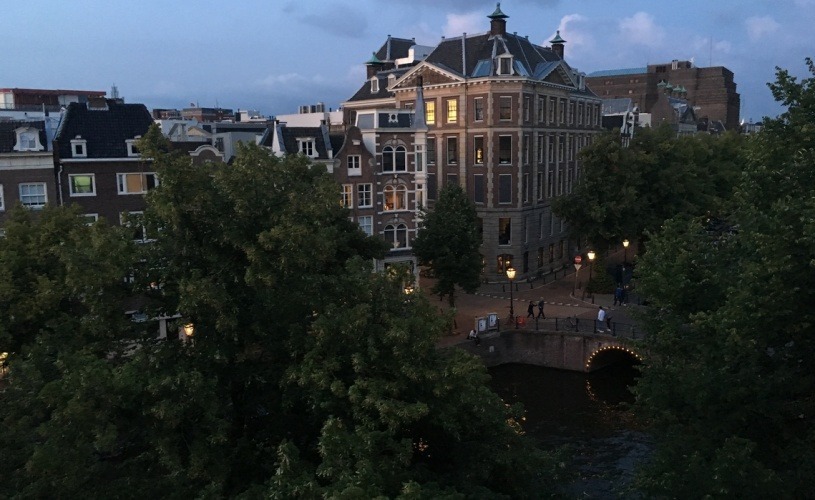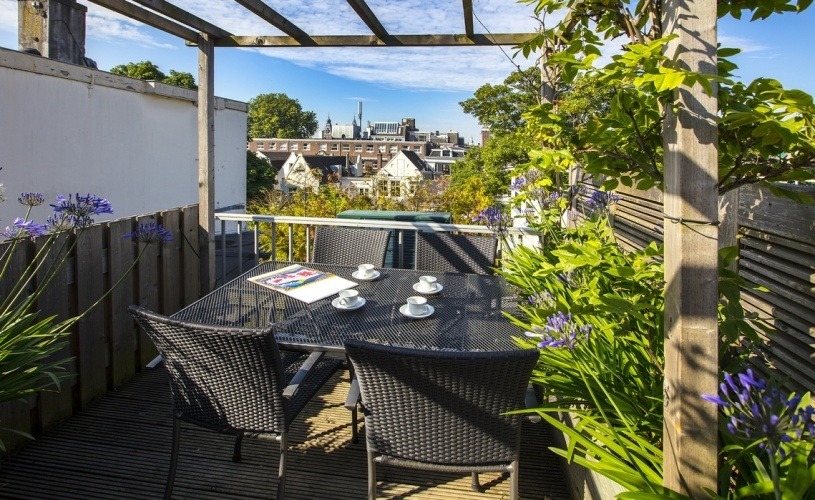Who Are the Dutch Masters Artists?
Each apartment is individually themed on a famous Dutch artist, ranging from Golden Age masters such as Rembrandt and Vermeer, to the contemporary Appel and Brood. The result is a stunning collection of regal and well-appointed residences, each with its own unique character and style. All of our apartments are designed to offer premium quality, comfort and modern convenience.
Piet Mondriaan

Piet Mondriaan was a well-known Dutch painter and an important contributor to the De Stijl art movement in the early 1900s. While living in Paris in the 1920s, he developed his distinctive abstract painting style vivid red, yellow, blue and black rectangles separated by bold, black lines.
In 1938, with the Second World War on the horizon, Mondriaan left The Netherlands for good, finally settling in New York, where he remained until his death in 1944.
Jeroen Bosch

Jeroen Bosch was a popular Dutch painter best known for his complex and imaginative works depicting sin and human moral failing. One of his most famous paintings is The Garden of Earthly Delights, a piece spread over three wooden panels representing heaven on the left, earthly delights in the middle, and hell on the right.
Bosch found great international popularity during his lifetime. Philip II of Spain bought a number of his paintings following Bosch’s death in 1516, many of which can now be seen in the Prado Museum in Madrid.
Vincent van Gogh

Post-impressionist Dutch painter Vincent van Gogh is generally regarded as one of the greatest painters in the history of European art. After completing a study at the Dutch Royal Academy of Art, he moved to Paris, where he developed his trademark style and use of vivid colours.
Today, Van Gogh is as well known for his artwork as he is for his turbulent life: he was repeatedly in and out of sanatoriums, and famously cut off a portion of his ear while sharing a house with French painter Paul Gauguin. He ultimately committed suicide at the age of 37.
Johannes Vermeer

Johannes Vermeer is regarded as one of the most talented 17th century painters. His artwork showcases everyday life, and he is renowned for his brilliant use of light and colour.
He died at the young age of 43, heavily in debt. His work was forgotten until the mid-19th century, when he was rediscovered. His popularity has since continued to grow, and his paintings have inspired several books and movies, including the recent Hollywood film, Girl with a Pearl Earring.
Frans Hals

Frans Hals was a talented artist, specialised in portrait and group paintings. He was born in Antwerp, but moved further north at a young age when the city fell to the Spanish in 1584.
Hals is best known for his ability to capture exact tone, light and expression. Despite constant demand for his work, he was often in financial trouble. As a result, his later paintings were less colorful and detailed, a fact attributed to increasing poverty: black and white pigments were cheaper than colour. After Hals’s death, his works became virtually worthless, until he was rediscovered in the mid-19th century.
Rembrandt van Rijn

Rembrandt van Rijn is generally regarded as the most important Dutch Golden Age painter. The Night Watch and The Jewish Bride are among his best known works, and exhibitioned in Amsterdams Rijksmuseum.
Rembrandts paintings are characterised by his dramatic use of chiaroscuro (sharply contrasting light and dark), and his informal societal compositions. Despite enormous popularity as a painter, he lived beyond his means and in the 1650s declared bankruptcy. On his death, he was buried in an unmarked grave in Amsterdam’s Westerkerk.
Willem de Kooning

In the 1930s, de Kooning developed his famous abstract style: heightened colours and geometric abstractions. In 1980 he was diagnosed with Alzheimers disease and his popularity soared. At auction in 1989, one of paintings, Interchange (1955), was sold for USD 20.6 million. De Kooning was awarded the National Medal of Arts in 1985, the highest honour given to artists in the United States.
Herman Brood

Brood began his career as a piano player and singer, starting his own group, Herman Brood & His Wild Romance, in the 1970s. He began painting in the 1990s, and became known for his large-scale, colourful works reminiscent of the CoBrA style. In 2001, at the age of 54, he committed suicide by jumping off the rooftop of the Amsterdam Hilton.
Karel Appel

Despite career successes abroad, Appel was not readily accepted in his home country. A mural he painted at the Amsterdam City Hall, for example, was so controversial at the time that it remained covered for 10 years.
In 1950, Appel left The Netherlands to live and travel in Europe and the Americas until his death in Zurich in 2006.
 en
en nl
nl


